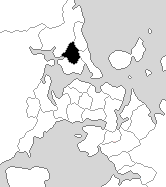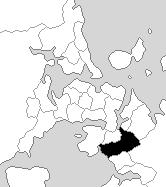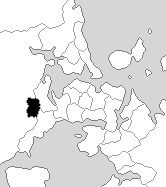Related Research Articles
Otago was a New Zealand parliamentary electorate first created for the 1978 election, which was replaced by the Waitaki electorate and Clutha-Southland electorates for the 2008 election. Its last representative was Jacqui Dean of the National Party.

Ōtaki is a New Zealand Parliamentary electorate, spanning part of the west coast of the lower North Island. The bulk of its population comes from the Horowhenua District, but it also takes in part of the northern Kapiti Coast, including the towns of Otaki and Waikanae, and part of Paraparaumu. The current MP for Ōtaki is Terisa Ngobi of the Labour Party. She has held this position since the 2020 election.

The Hunua electorate existed three times for the New Zealand House of Representatives beginning in 1978, based at the south end of the Auckland urban area, and named for the Hunua Ranges. It covered different geographical areas over those periods. The electorate was last represented by Andrew Bayly of the National Party before its dissolution in 2020.

Pencarrow is a former Parliamentary electorate in the lower Hutt Valley of New Zealand, from 1978 to 1996.
Rangiriri was a rural New Zealand parliamentary electorate in the Auckland Region from 1978 to 1984.
Kapiti was a New Zealand parliamentary electorate, from 1972 to 1996. A bellwether electorate, it frequently changed between National and Labour.

Glenfield was a New Zealand parliamentary electorate for four terms, from 1984 to 1996. It was represented by two members of parliament, first Judy Keall of the Labour Party, and then Peter Hilt of the National Party. Hilt defected to United New Zealand in 1995.

Otara was a New Zealand parliamentary electorate in Auckland, from 1984 to 1996. It existed for four parliamentary terms and was represented by three members of parliament, two from Labour and one from National.

Eastern Hutt is a former New Zealand parliamentary electorate from 1978 to 1996. It was represented by two Labour MPs.
Tongariro is a former New Zealand parliamentary electorate, from 1984 to 1996. During the four parliamentary terms of its existence, it was represented by three members of parliament.
Ruahine is a former New Zealand parliamentary electorate, from 1972 to 1978.
East Cape is a former New Zealand Parliamentary electorate, from 1978 to 1993.
Tarawera is a former New Zealand parliamentary electorate, from 1978 to 1996. It was represented by two members of the National Party.
West Auckland is a former New Zealand parliamentary electorate on the western outskirts of Auckland, created for the 1984 election from part of the former Helensville electorate. The electorate was abolished for the 1993 election, and split between Henderson and Waitakere electorates.

Henderson is a former New Zealand parliamentary electorate, from 1969 to 1978 and then from 1993 to 1996.
Yaldhurst is a former New Zealand parliamentary electorate, near the city of Christchurch. The electorate was to the southwest of Christchurch, and was suburban and semi-rural.

Papatoetoe is a former New Zealand parliamentary electorate, and is part of greater Auckland.
Wellington Suburbs and Country is a former parliamentary electorate in Wellington, New Zealand, from 1911 to 1919. The electorate was combined from Wellington Suburbs and Wellington Country electorates.
Ponsonby was a parliamentary electorate in Auckland, New Zealand from 1887 to 1890 and from 1946 to 1963. The Ponsonby electorate was represented by two Members of Parliament.
Oroua was a parliamentary electorate in the Manawatū-Whanganui region of New Zealand from 1902 to 1938.
References
- McRobie, Alan (1989). Electoral Atlas of New Zealand. Wellington: GP Books. ISBN 0-477-01384-8.
- Wilson, James Oakley (1985) [First ed. published 1913]. New Zealand Parliamentary Record, 1840–1984 (4th ed.). Wellington: V.R. Ward, Govt. Printer. p. 265. OCLC 154283103.
- Norton, Clifford (1988). New Zealand Parliamentary Election Results 1946–1987: Occasional Publications No 1, Department of Political Science. Wellington: Victoria University of Wellington. ISBN 0-475-11200-8.